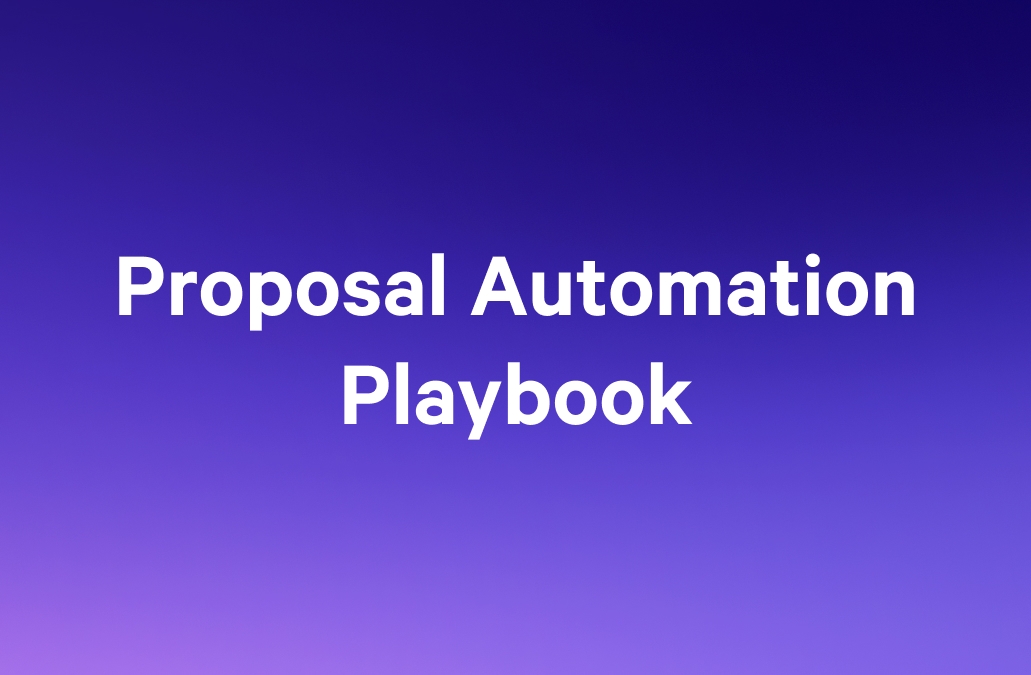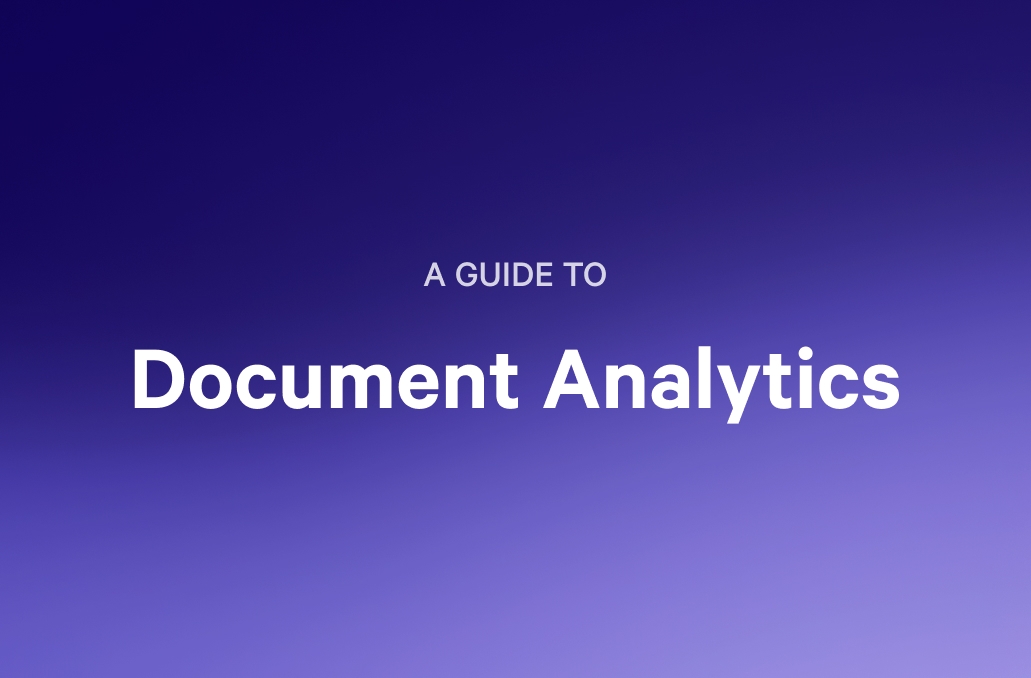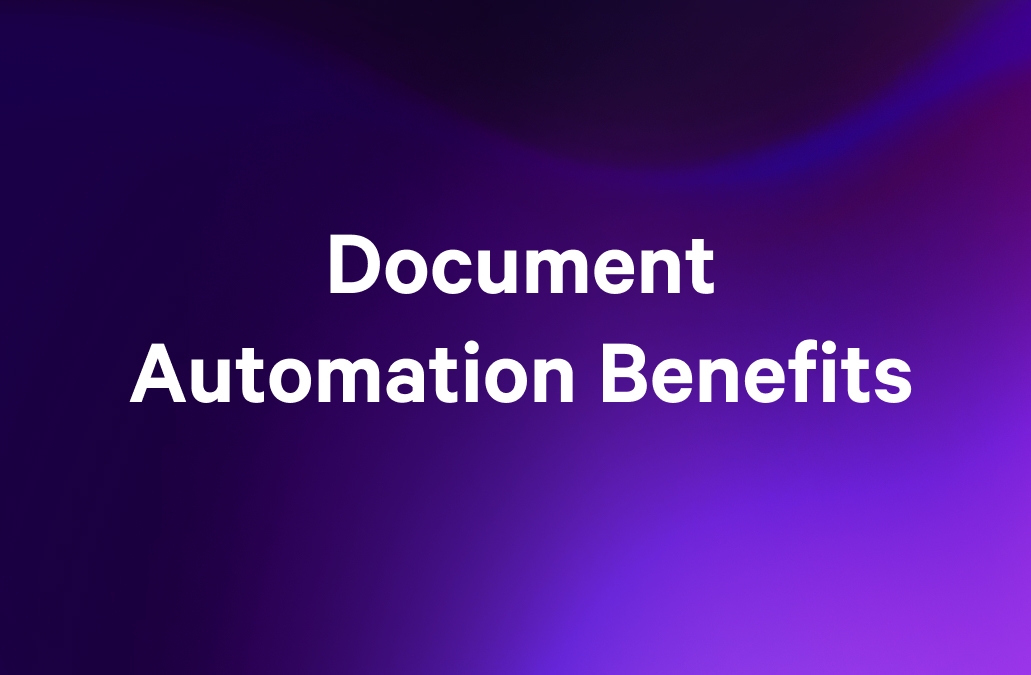How the Push for Hyper-Personalized Proposals Is Eroding Agency Margins—And What to Do Instead

Your team just burned 12 hours creating a “custom” proposal. You rewrote case studies, adjusted timelines, and developed new messaging for their specific challenges.
Tomorrow, you’ll find out if any of it mattered.
What you do know: beneath all that tailoring, it’s the same core services, the same process, and the same expertise you always deliver.
The customization feels necessary in the moment. But step back, and most of it could have been modular.
This cycle drains margins, burns out your team, and rarely improves win rates enough to justify the extra hours.
We spoke to agency leaders who’ve developed repeatable systems for proposals that feel personal without the heavy lift. In this guide, we’ll show you what’s eating your time and how to balance fixed building blocks with customization, so you can win more work without burning out.
The hidden costs killing your agency's margins
Jonathan Pritchard, CMO and previously the Senior Marketing Consultant at Thrive Internet Marketing Agency, has had over 1,400 conversations with qualified prospects over the last 6 years. Each proposal required 30 minutes to an hour of customization time.
Do the math: that's potentially 700-1,400 hours of proposal work—equivalent to 4-9 months of full-time labor. At a $150/hour blended rate, agencies like Jonathan's invest $105,000-$210,000 in proposal customization over six years, often without measuring the return.
On paper, these hours often go unnoticed. You track billable hours, monitor project budgets, and watch your overhead like a hawk. Yet proposal customization slips under the radar because it feels necessary and client-focused.
It starts innocuously—a designer spending an extra 20 minutes tweaking a proposal layout, a strategist rewriting case studies to "better fit" the prospect's industry, an account manager restructuring timelines because this client is "different." Each task feels minor, even justified.
But these micro-decisions quietly add up, eroding your margins before you've even won the work hours that could have gone into billable projects, service improvements, or supporting existing clients more deeply.
Over time, this hidden cost slows your growth, reduces profitability, and burns out your best people—all in the name of "just a few tweaks."
The 30-60 minute trap
That hour you spend "quickly customizing" each proposal adds up fast, especially when sales automation could handle much of the formatting work.
Damien Elsing, Founder of HubSpot Partner Consulting Agency CLCK breaks it down:
"For a fairly simple but detailed proposal for a large implementation project, it takes about 30 to 60 minutes. The personalization comes from tailoring the solution and its articulation to the client's specific input."
Sounds reasonable, right? But multiply that by every prospect in your pipeline, and you’re suddenly looking at entire workdays disappearing into proposal tweaks instead of client delivery or strategic growth.
As Damien notes:
"The biggest time-waster has traditionally been the customization of proposals—structuring them, fine-tuning, and adding line items."
These hours drain focus and momentum from your team. When every proposal feels urgent and every client feels special, those “quick” customizations quietly pile into dozens of lost hours that could have been spent on billable work, improving processes, or supporting existing clients more deeply.
The opportunity cost of over-customization
The real damage isn't just the proposal hours, but what you can't do while you're customizing.
“We can make more money, but we can't make more time. We can only get more efficient with how we spend it,” Jonathan explains. “If I'm spending too much time on presentations, I'm not spending time on other elements of the business.”
This creates a cascading effect on agency growth:
- Client service suffers: Less time for strategic thinking on existing accounts
- Service development stalls: No bandwidth to refine or expand offerings
- Team development stops: Senior people are stuck on proposal work instead of mentoring
- Business strategy gets shelved: The urgent (proposals) crowds out the important (growth initiatives)
As Jonathan puts it:
“If we don't have proposals and presentations, we don't have revenue. Without revenue there's zero profitability, so proposals have to happen. But your question hits on the all-important issue of the law of diminishing returns. Spend time getting it right, but no longer.”
The multi-stakeholder complexity spiral
Your main contact loves your approach. But they’re not the only one making the decision. In large B2B deals, your proposal often needs to convince an entire committee—people you may never meet or speak to directly. This multi-threading approach to enterprise sales means your proposal becomes the primary sales tool for stakeholders you'll never directly influence.
Jonathan Pritchard explains this reality:
"In enterprise, business-to-business kind of sales, there are so many people involved in saying yes or no that you kind of present it and then put it in their hands, and then they've gotta go have a whole bunch of conversations with a whole bunch of people that you may never even talk to."
This dynamic creates a documentation nightmare. Your proposal needs to make sense to people who weren’t in the room, don’t know your expertise, and might question every recommendation.
As Jonathan explains:
"If you assume everybody has that level of understanding, you're going to make a proposal that skips that step, and you're just going straight to recommendations. So now somebody you've never talked to will look at your recommendations and think these make no sense."
In other words, your proposal isn’t just for your main contact—it’s for every stakeholder behind the scenes who might skim it quickly or focus only on a single section. They need to understand not just what you’re suggesting but why it matters and how it solves their business problem.
This is why strong proposals include thorough context: clearly articulating the client's situation, explaining each step of your process, and tying every recommendation back to their goals. You need to build in assumptions you’d never have to state in a live presentation and anticipate the questions stakeholders will ask when you’re not there to answer them.as
What starts as a straightforward proposal can quickly become a comprehensive brief written for people you'll never meet but who hold veto power over the entire deal.
The "$500 vs. $50K" problem
Hyper-customization becomes a strategic trap when you try to serve everyone and end up serving no one well.
Why do agencies do this? Fear of losing any potential deal leads them to become everything to everyone, instead of focusing on their ideal clients.”
According to AgencyAnalytics' 2024 Benchmarks Report, 34% of marketing agencies cite acquiring new clients as their top challenge. It's no surprise that, in their desperation not to lose any potential deal, agencies stretch themselves thin and over-customize proposals in hopes of appealing to everyone, that ultimately resonate with no one.
Jonathan explains how this desperation to appeal to everyone backfires:
"Trying to do custom work for anybody and everybody they could possibly help means they're not differentiated. They don't have unique goods. They're trying to help somebody with a $500 budget and also land a B2B enterprise-level client that's spending $50,000 just in ad spend for one campaign."
Unfortunately, your proposals then turn into generic catch-alls that fail to resonate with either audience.
Smaller clients feel overwhelmed by enterprise-level detail and complexity. Enterprise clients question whether you truly understand their scale and needs. You end up "chasing two rabbits"—and catching neither.
However, Jonathan warns that some agencies overcorrect by over-optimizing and automating as much as possible to maximize profits, then staffing projects with the lowest-skilled, lowest-paid people possible to execute the work.
These agencies create proposals that promise premium outcomes but feel mass-produced. Clients investing serious budgets can always tell when they're getting a one-size-fits-all approach, no matter how polished the visuals might be.
As a result, you undermine your brand and make it harder to win or retain the right clients.
What agencies think matters vs. what actually drives wins
The biggest misconception in agency sales is that heavy customization equals differentiation. Agencies spend hours tailoring every section, convinced that prospects need bespoke deliverables, hyper-specific case studies, and industry jargon to say "yes."
But despite that effort, most marketing agencies only win 31% to 50% of their sales pitches. This underscores that extensive customization rarely delivers a proportional return on effort.
Jonathan's experience with 1,400+ prospects reinforces this: endless personalization often misses the mark because it doesn’t address what clients value.
“Fussing with tiny aesthetic details that have no bearing on the substance of the message is wasted time. Additionally, it's important to vet prospects on the first call and weed out poor fits. That way we aren't spending time that we can never get back or paid for.”
In reality, Jonathan says that what clients evaluate is surprisingly consistent, no matter the industry, company size, or project scope.
"Ultimately, every proposal is the same proposal. You've got this problem that I solve, the solution is to hire me to solve it."
Clients judge proposals on three core questions:
- Will I get what I'm paying for?
- Are you good at it?
- Can you prove you've done it before?
Notice what's missing? Endless custom deliverables, elaborate personalization, or niche buzzwords.
As Damien explains,
"When proposals aren't won, it's usually due to misalignment and not fully understanding what the client meant. This often stems from not discussing the proposal on a call to get their feedback and non-verbal cues."
In other words, proposals fail because they miss the mark on what the client needs and values. Discussing proposals live and reading between the lines often does more to win trust than any extra slides or custom deliverables ever could.
Clients want proof you can deliver, evidence of your expertise, and confidence that they’ll gain qualified leads, revenue, or market traction. Everything else is window dressing—impressive to other marketers, but irrelevant to decision-makers.
Start every proposal with a problem statement, follow with your approach framework (standardized), then a ‘proof points’ section linking to actual results and testimonials.
The one thing worth personalizing
The difference between a winning proposal and one that gets filed away? Whether you can describe the client’s problem more clearly than they can themselves.
In fact, over half of marketing agency leaders say that understanding client needs is the single most important factor in winning sales pitches, far outweighing flashy deliverables or heavy customization.
As Jonathan puts it:
"The thing I do personalize is helping them understand that I understand their situation. If you can't accurately describe what situation they're in, they won't believe you've got a good solution for their problem."
This means connecting dots they haven’t connected, spotting patterns they’re too close to see, and naming the real issue behind their surface requests.
And it’s not just for your main contact. The stakeholders who never spoke to you need to see that same depth of understanding. As he explains:
"If you assume everyone already gets it, you’ll skip straight to recommendations. Then someone you've never met will look at it and think, 'These make no sense.'"
When you get the situation right, you don’t need endless custom slides or one-off deliverables to impress. A clear, precise articulation of their problem—and your ability to solve it—is the personalization that wins deals.
Where visual polish actually matters
Your proposal content can be modular, but it still needs to look professional when it reaches the client. While you don’t need to create custom graphics for every section, do set up templates with Qwilr that automatically format your standardized content into something polished.
Your standardized sections—team bios, case studies, pricing tables—look polished every time without manual design work.
Premium proposals shouldn’t require new design work every time. Strong templates handle the heavy lifting so your team can focus on substance.
The 4-part system for profitable proposals
You send proposals every time you pitch a new client, so they need to be scalable by design. By building modular elements upfront, each proposal still feels tailored, but your team can focus on the details that actually influence a client’s decision: highlighting relevant results, addressing exact pain points, and clearly explaining your process.
A scalable proposal system allows your team to handle more opportunities, protect margins, and make a stronger first impression—all while maintaining the premium feel prospects expect.

Standardize your solutions
Your core processes—strategy frameworks, research methods, and execution steps—are likely the same across 80% of your clients. Yet every proposal still starts from a blank page.
Instead, build repeatable service packages that work across client types. Spend your time refining these offers and improving delivery, rather than rewriting the same explanation for each prospect.
In fact, 38% of agencies sell only one or two products per client, representing a major missed opportunity to bundle services, reduce one-off customization, and build stronger, more profitable relationships.
What happens when you standardize?
- Faster proposals: Select and adapt pre-defined packages instead of starting from scratch.
- Predictable delivery: Your team knows each step inside out, reducing surprises.
- Better margins: Clear scopes mean no hidden overages or last-minute add-ons.
- Deeper expertise: Your team masters core methods through repetition, leading to higher-quality work.
Take Magier’s approach to creative services. Instead of promising a fully custom design for every client, they offer three clear packages:
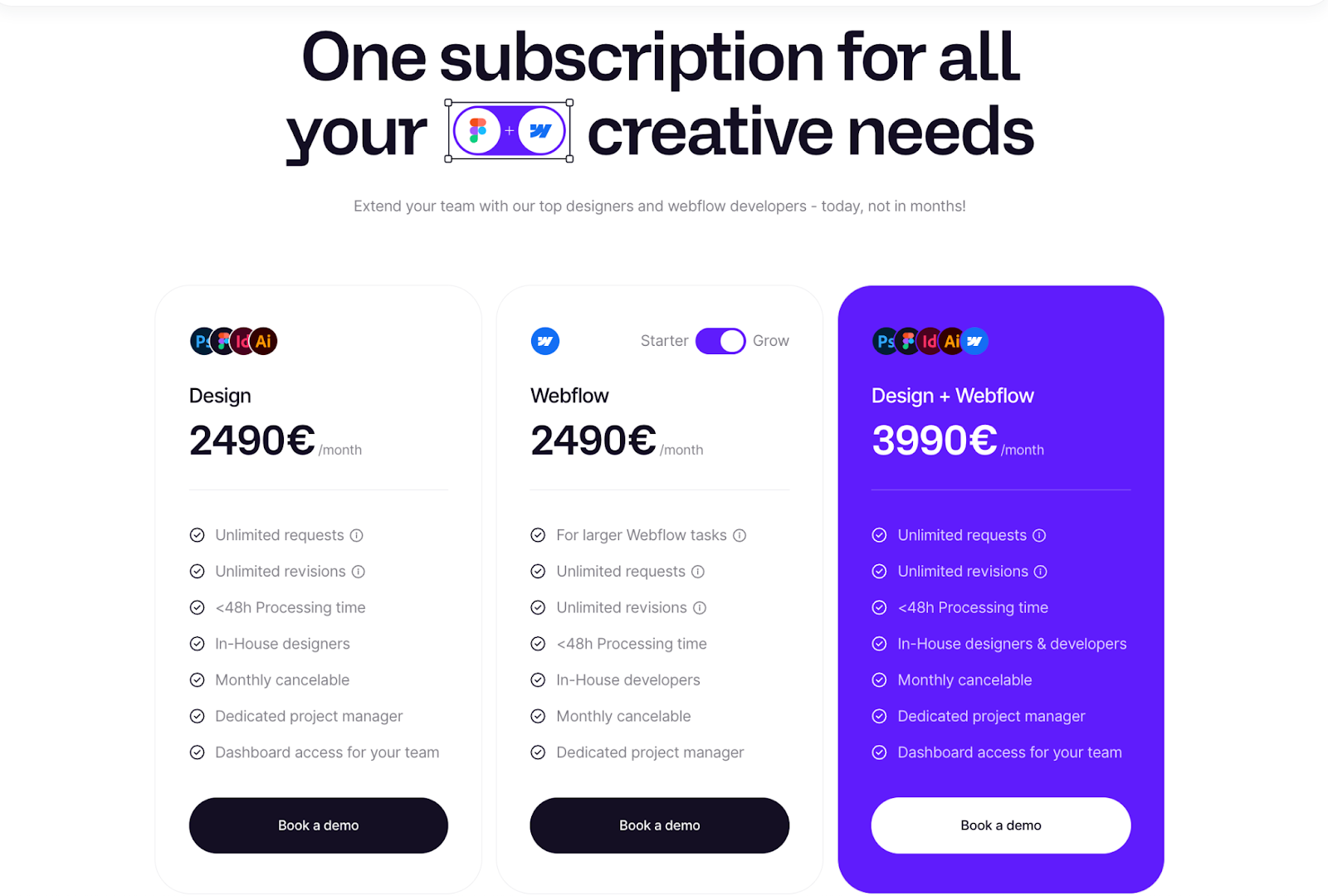
Clients don’t want endless customization—they want reliable outcomes. Magier delivers predictable results because it focuses on consistent, proven packages rather than reinventing its approach for each client.
Build the visual layout once
Create a branded template that handles design for you so that you can focus on content.
A proposal’s look and feel matter as much as the strategy behind it. High-value services deserve a polished, professional presentation, but perfecting fonts, colors, and layouts for every proposal wastes time better spent on real client insights.
Instead, invest upfront in one strong visual framework that works for all proposals. Set up consistent layouts, brand colors, and reusable content blocks that snap together easily. Once your design foundation is solid, you can focus entirely on tailoring the message and strategy.
Qwilr makes this simple. The platform automatically applies your brand colors, fonts, and formatting while you focus on the content.
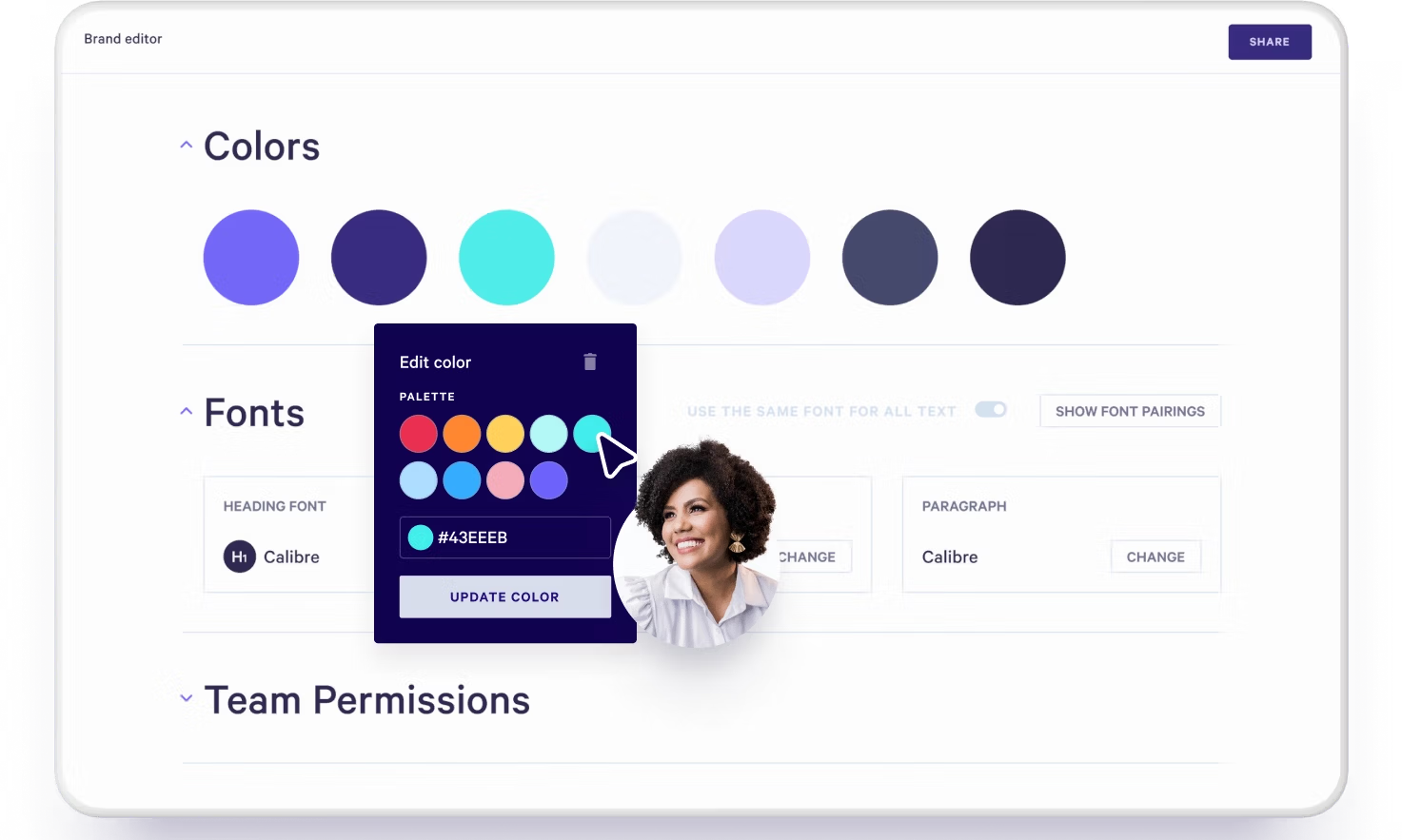
With drag-and-drop blocks and an intuitive editor, you can build, save, and reuse blocks without starting over each time.
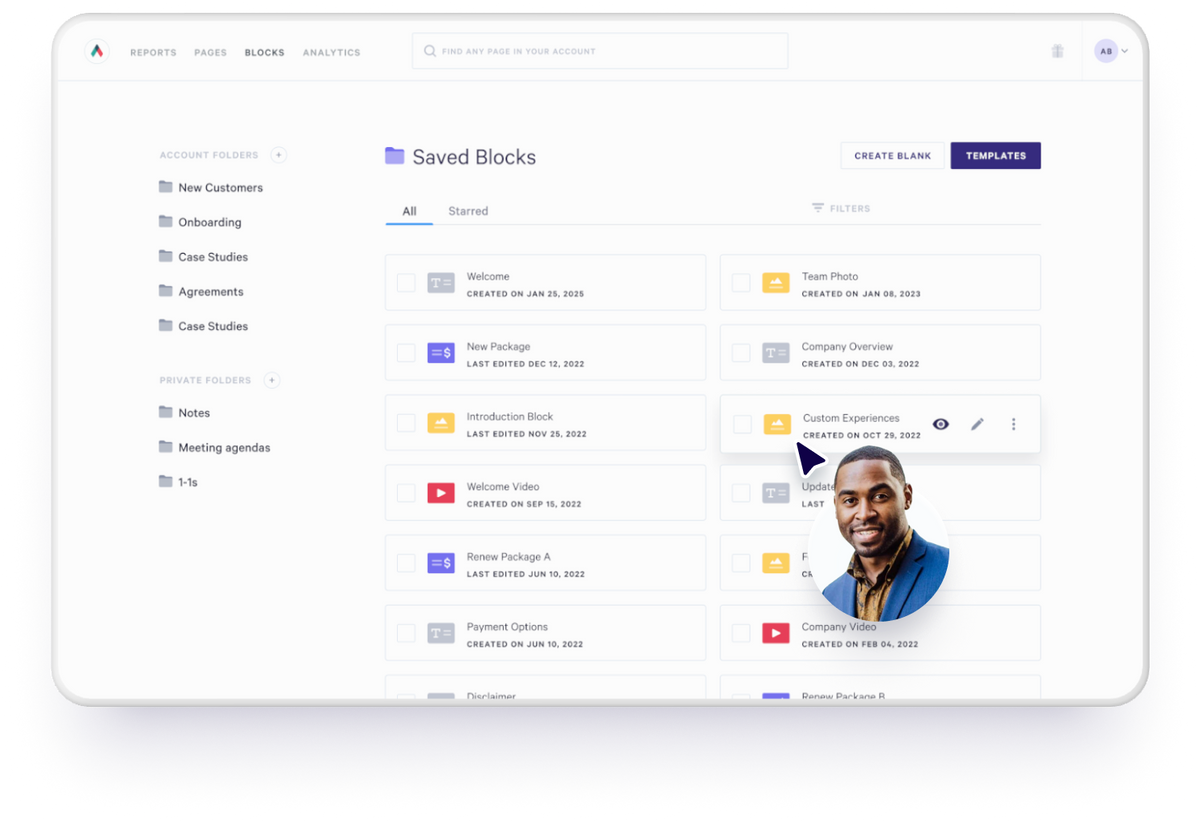
When your design system is set, every proposal feels polished and consistent, whether you’re pitching a startup or an enterprise client.
Zero in on the client’s situation before pitching your solution
Imagine you run an agency that offers SEO services. A potential client comes to you saying, “We’re invisible on Google, and our blog isn’t driving leads.”
It’s tempting to jump straight into custom calendars, new link-building packages, or audits. But instead of scrambling to customize deliverables, focus first on proving you understand their exact situation better than anyone else.
When you clearly articulate their problem, they feel heard and trust that your standard service can solve it—no endless tweaking needed.
How to do this effectively:
- Mirror their language: Use their words. If they say “invisible,” reflect it back. Example: “Right now, your brand is practically invisible in organic search, making it harder for buyers to find you when they’re actively researching.”
- Connect the dots: Show how pain points are linked. “Your lack of SEO-optimized blog content and missing backlink strategy are two sides of the same coin—together, they block your brand from building authority and attracting qualified traffic.”
- Highlight the impact: Clarify the stakes. “Without addressing these gaps, you’ll stay dependent on paid channels, driving up acquisition costs and limiting long-term growth.”
- Position your solution: Present your service as the obvious answer. “A foundational SEO program focused on high-intent keywords and strategic link partnerships gives you sustained visibility and qualified inbound traffic without bloated content budgets or endless paid ads.”
Jonathan believes differentiation happens when you consistently connect your proposal back to their words and needs:
"Differentiation comes from tying every part of the proposal back to the client's own words and needs. When you reflect their language and connect your approach directly to their stated problems, the proposal feels made for them even if it uses your standard service framework."
When you clearly define their situation, you need to prove you understand their challenges deeply and show exactly how your solution addresses them.
Follow the 80/20 rule of proposal personalization
Focus your customization on the elements that influence buying decisions, using an 80/20 approach: keep 80% of your proposal standardized and personalize the 20% that has the most impact.
Your sales methodology, team, pricing structure, and case studies should stay consistent. What you personalize are the details that speak directly to the client’s priorities: their situation, pain points, and expected outcomes.
High-impact personalization areas include:
- How you articulate their problem (mirroring their exact language and concerns)
- The outcomes you project (framed in their context, using specific numbers)
- Timeline alignment (matching delivery dates and milestones to their stated needs)
For example, an e-commerce client might see a problem section like:
"Your organic traffic has been stuck at 50k monthly visitors for six months."
And an outcome projection such as:
"Based on your current conversion rate, a 40% traffic increase would generate an additional $200k in annual revenue."
Meanwhile, your SEO methodology, team bios, and service descriptions remain untouched. This ensures you stay efficient while making the client feel understood.
A practical way to keep this balance?
Create "personalization slots" in your template—dedicated areas to insert client-specific insights without rebuilding the entire proposal each time. This keeps customization focused, speeds up prep time, and prevents scope creep in your proposal process.
Implement performance tracking
A proposal system is a living process that evolves as you learn which approaches improve win rates, shorten sales cycles, and increase deal value. Build a feedback loop that highlights what drives wins and what wastes time, so you can make informed improvements instead of relying on gut feeling.
Monitor:
- Time investment per proposal vs. win rate: Track how many hours go into each proposal and compare it to close rates. This helps you find the efficiency sweet spot where your effort directly supports results and cuts back on work that doesn’t pay off.
- Revenue generated per proposal hour invested: Understand your true ROI on proposal time. Spot where customization justifies the effort and where simpler, more streamlined proposals perform just as well.
- Conversion rates: templated vs. heavily customized proposals: Test if extra personalization actually improves outcomes or if it simply burns resources without lifting win rates.
- Sales cycle length by proposal type: Analyze whether more focused, modular proposals speed up decision-making compared to lengthy, fully custom decks.
Set aside time to review every proposal sent that week, regardless of whether it closed or not. Use Qwilr to zero in on sales content analytics and find out where prospects spent time reading, what questions arose on calls, and which sections sparked confusion or excitement.

This regular review helps your team understand exactly which messages earn attention, which sections prospects focus on, and what drives them to take the next step.
Zoom out and compare performance across client types, deal sizes, and industries. You might learn that enterprise clients spend more time on methodology and process sections, while startups zero in on pricing and timelines. Use these insights to fine-tune future proposals based on what each segment values most.
Retool your proposals to work for you
Your proposal shouldn’t be a chaotic, last-minute scramble or an endless design exercise. It’s a strategic document that proves your expertise, clearly addresses your client’s challenges, and builds customer trust before a single kickoff call.
When you shift from hyper-customized chaos to a modular, data-driven system, you stop chasing every possible deal and start winning the right ones. A refined proposal process creates measurable impact across your agency:
- Higher win rates because clients immediately see you understand their exact pain points and goals
- Shorter sales cycles thanks to targeted, relevant messaging that makes decisions easier
- Better margins by cutting unnecessary customization hours and controlling scope creep
- Stronger brand perception because every proposal looks polished and consistent, reinforcing your credibility
But none of this happens without the right foundation. You need a platform that automates design and branding, shows exactly how prospects engage with each section, and helps you continually improve your proposals based on real client behavior.
Qwilr lets you build stunning, on-brand proposals in a fraction of the time. With modular content blocks, detailed analytics, and intuitive drag-and-drop design, you can focus on solving your client’s problem better than anyone else.
About the author

Kiran Shahid|Content Marketing Strategist
Kiran is a content marketing strategist with over nine years of experience creating research-driven content for B2B SaaS companies like HubSpot, Sprout Social, and Zapier. Her expertise in SEO, in-depth research, and data analysis allow her to create thought leadership for topics like AI, sales, productivity, content marketing, and ecommerce. When not writing, you can find her trying new foods and booking her next travel adventure."
